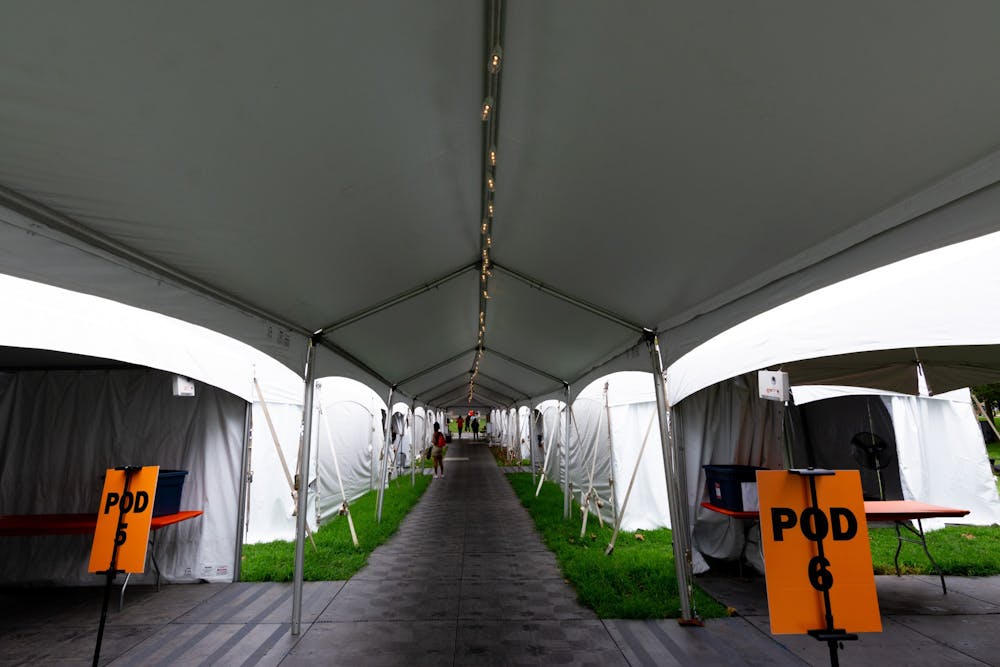The following is a guest contribution and reflects the author’s views alone. For information on how to submit to the Opinion Section, click here.
As the impacts of the COVID-19 pandemic have intensified since last December, it has become clear that the vaccines-only approach to mitigation not only failed to prevent, but in fact contributed to, unprecedented levels of disease transmission. As of April 2022, 60 percent of Americans — including 75 percent of American children — in the United States have contracted the illness. One in five of those between the ages of 18 and 64 may develop a new health condition attributable to their COVID-19 infection. Hundreds of thousands of people have died, tens of thousands of them vaccinated. Had mitigation efforts included non-pharmaceutical interventions, omicron’s initial spread could have been controlled and the stress on our healthcare system reduced. The ongoing wave, difficult to observe due to reduced testing, is proof that mass infection does not provide lasting immunity and leads to additional variants which precipitate more infection, disability and death.
This situation is unlikely to change in the near future. Immunity will continue to be short-lived, providing only a few months (or weeks) of protection, until reinfection becomes a risk. New variants will outcompete older strains due to either increased transmissibility, potential for immune escape, or both, with the potential for increased severity of illness. COVID-19 will continue to pressure our overburdened healthcare system, and those infected, including Princeton University students, will suffer from persistent sequelae and develop new health conditions. Nasal vaccines that could provide sterilizing immunity against COVID-19 are over a year away.
The likelihood of a catastrophic fall or winter surge of the disease is high enough that we must prepare for it. If the pandemic will not simply go away, we are the ones who must adapt by implementing a public health program that incorporates multiple mitigation strategies, even in the face of institutional resistance to an indoor mask mandate.
So long as the pandemic continues to rage, many prefer that masks be mandated in indoor spaces. The supposed pandemic reality — that of rescinded mask mandates, which are unlikely to return — is more about the priorities of our leaders than it is about widespread public opposition to wearing masks. This demonstrates that whether or not people wear masks depends primarily on the signals and messaging provided by our institutions, not individual attitudes. The narrative focus on individuals distracts from our leaders’ refusal to prioritize our health over profit. Remember this the next time you are told that the public is ‘tired of wearing masks’ or that federal mandates are ‘politically unpalatable.’ Masks continue to be a critical tool for disease control and prevention and an integral component of a layered mitigation strategy, which is why the University must continue to provide N95 or KN95s to all members of its community.
Even if we are unable to hold administrators accountable on the issue of mask mandates, there are other options for mitigation to which they may yet be amenable. Upgrades to ventilation systems across campus have been made where possible; however, this infrastructure does little to protect from infection if you breathe in virus-laden exhaled air before it can be filtered. More effective filtration can be achieved with in-room HEPA filters. To improve air quality, the University should install HEPA filters in classrooms and dining halls and issue guidance encouraging open windows to improve ventilation, weather permitting. If administrators refuse to act, then at least in classrooms, students and professors can agree amongst themselves to wear masks, run air filters, and open windows in order to protect their health.
Some major campus outbreaks can be traced back to eating clubs, such as the localized surge that took place in November and February. This is consistent with the epidemiology of COVID-19: transmission is driven by superspreading events, in which one or a few individuals infect many others in crowded, poorly ventilated indoor spaces where the concentration of viral particles builds up to dangerous levels. If you are a member of an eating club, you should urge your officer board to invest in infrastructure upgrades that reduce transmission.
These measures would protect you and others from the risks of COVID-19 infection, which include a wide range of disabling long-term effects — chronic fatigue, cognitive impairment, cardiovascular disease, and new-onset psychiatric conditions, to name a few — which doctors do not yet fully understand and against which vaccination provides only modest protection. Some of those suffering from long COVID across the nation are students, and as many of them will tell you, there is no effective treatment available.

Our institution has stripped away pandemic protections even as scientific evidence of the potentially disastrous long-term effects of infection piles higher. If administrators demand that we as students, staff, and faculty risk our health in an unsafe campus environment, then they must also abandon their attempts to downplay the impacts of COVID-19 and begin preparations for a safer fall semester now.
Christopher Lugo is a senior studying in the School of Public and International Affairs from Ocala, Fla. He can be reached at clugo@princeton.edu.
Correction: A previous version of this article misstated the percentage of infected Americans that are children.









